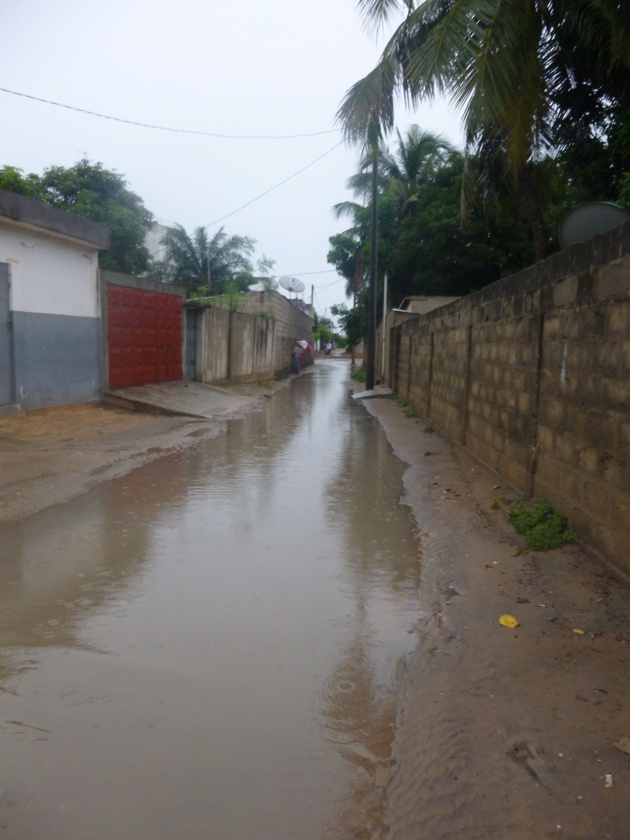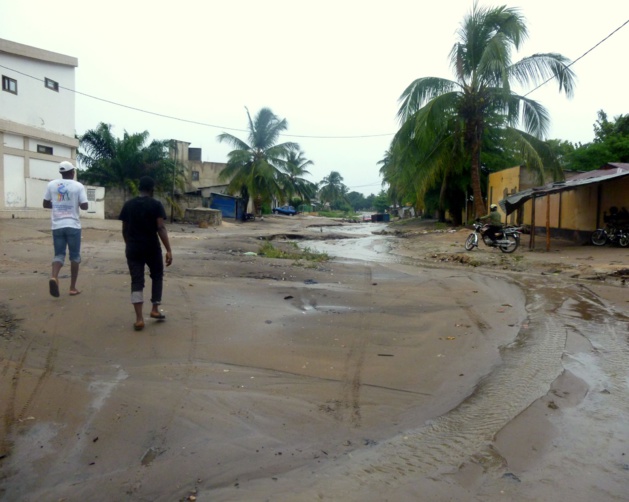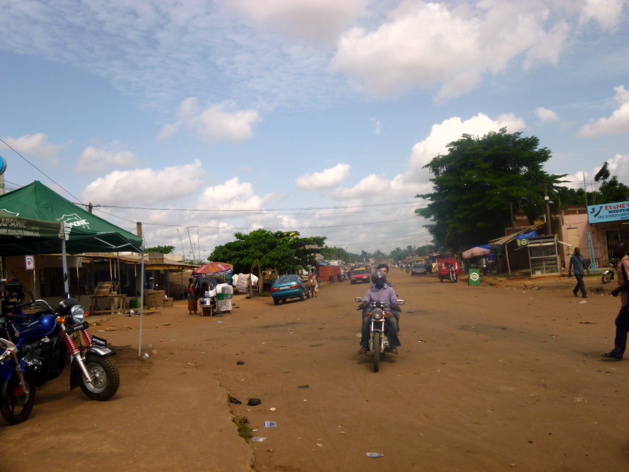
Credits : Marion Chevalier
Léo, who has been living in Lomé, the capital city of Togo, for 30 years, tells: “Here, our roads are in a catastrophic state.” When gazing at the horizon, the look of Togolese roads is very different from occidental urban landscapes. In Lomé, traffic conditions are difficult and there are very few asphalt roads. While the city counts over 800,000 inhabitants, it has “only 3 big roads”, as explained by Kossi Emile, 29.
In reality, there are only very few of these big roads. The city is almost entirely composed of dirt roads that are sometimes as large as a two-lane highway. Traffic on the main roads is very dense. Many motorbikes, cars and trucks often drive very closely on a same lane. Most of the time, there is no central median or white line in the middle of the road to mark out the width of the lane.
Therefore, the lanes are defined by the density of traffic in both directions. Besides vehicles, there are also many vendors on the roadside. These walk between the cars as soon as the traffic light turns red to sell their products (fruits, vegetables, water, phones, tissues…).
Unfortunately, these overcrowded roads lead to accidents but they are not the only cause of deaths. Roads lack maintenance. As a result, many potholes, lowering of the road, holes in the concrete and other types of damaging disturb traffic safety. Besides these few roads, there are almost only dirt roads in rural towns, where the risks are completely different.
In Togo, there are other risks related to roads outside the cities. According to Léo, “the state of our roads is complete dilapidation, especially in rural areas where it is a catastrophe.” In the country, anyone who wants to drive out of the city towards the mountains must have a loud car horn. Many villages are only reachable through small, narrow and chaotic paths.
Since it is almost impossible for cars to cross paths, all drivers have taken the habit to honk very regularly so they can be heard by anyone coming from the other direction after a bend. On these mountain roads, one also has to expect to cross paths with lots of trucks coming out of fields and packed with pineapples, bananas, maniocs or yams to bring to the big cities situated down the mountain. These journeys are very dangerous.
The loads transported by these trucks are enormous. Once they are full, the boxes left are often tied on to the roof or hang over the windows. Whatever it takes, the whole stock needs to be sold out. This driving shambles leads to great risks for the driver, who is alone on his journey (in order to save space) and ventures down the winding roads. The tires of the trucks suffer under the weight of the heavy loads, the vehicle is destabilized and threatens to fall over anytime.
“Take me fast”
In order to move around Lomé, or even to drive outside the city, the solution mostly chosen remains the motorbike. According to Kokou, a 25-year-old Togolese, “most inhabitants don’t have their own vehicle” and therefore use the motorbike taxi, called the “zem”. “Zem” is short for “zemidjan”, which means “take me fast”. These motorbike taxis can’t be identified at first sight because there is nothing to indicate that they are taxis. They completely blend into the group of other drivers.
On the other hand, car taxis have a yellow roof in order to be recognizable. When “zem” drivers see pedestrians on the roadside, they often stop to offer their services, sometimes in an insisting way. Otherwise, one has to whistle and wave at them to come in order to get their attention and solicit their services.
Whether they take the car or the motorbike taxi, passengers pay their seat and do not rent the vehicle like in Europe. On a motorbike taxi, the driver can take up to 2 passengers. Kossi Emile explains, “it is normally forbidden to have too many people on the motorbike or in the car, but corruption enables these situations to happen.”
Léo also explains that even though taking two passengers puts the drivers in danger, “they sometimes take one or two extra customers to be able to make ends meet.” As for a car taxi, the driver can take 7 passengers at most, for a total of 8 people in the car.
In Togo, as far as cars and motorbikes are concerned, there is no counter to determine the cost of taxi fares. Before getting in, the passenger indicates where he would like to go to and the taxi driver offers a price. After negotiating, both sides agree on a price and once the taxi drops the passenger off, the latter just needs to pay the driver. Should the taxi have several passengers, each of them pays the fare individually.
Frauds are rare, except for a few women who catch a taxi alone to go home at night. In these cases, some drivers sometimes announce a higher price at the arrival than the one agreed for at the departure. If these women refuse to pay more, the drivers follow them to their house and make some noise until they wake the neighbours up. In order to avoid such scandals, women often reluctantly pay the price requested by the driver.
“When it rains, it is chaotic”
“The most dangerous situations are on rainy days,” explains Léo before adding that “when it rains, it is chaotic. The road is muddy and it is very hard to drive”. When it rains in Lomé, all dirt roads turn into muddy ones, which is extremely dangerous. Motorbikes sometimes get stuck and their drivers have to get off, step into the mud and try to get their vehicle out. The soil is slippery and motorbikes slip on the road.
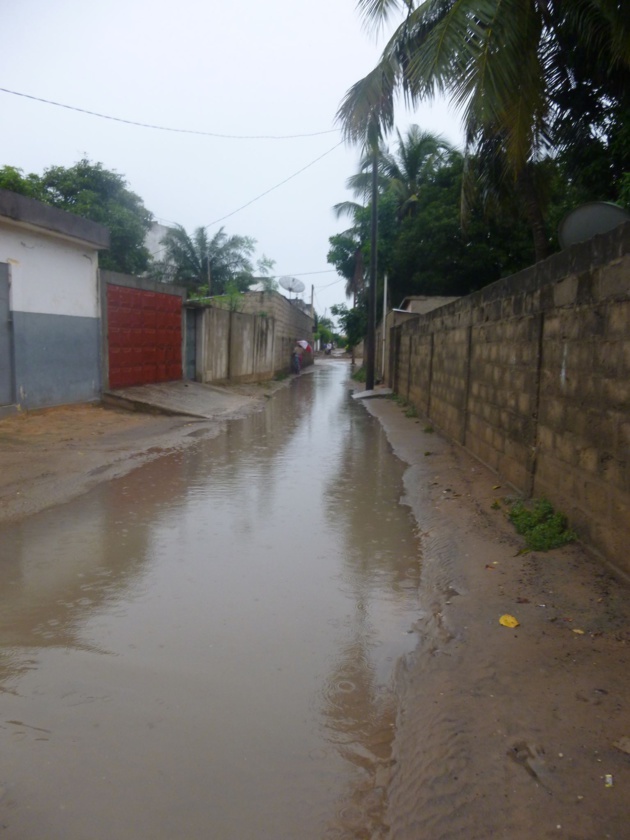
Vehicles may skid at any time. Besides the mud, the rain forms huge puddles of water on the road. The drivers try their best to slalom on the roads that look like real gruyeres. But slaloming in mud is very risky and most drivers find themselves face to face with other motorbike riders who are also slaloming on the road in the other direction.
In some cases, the puddles are so wide that they cover the whole road, which forces the “zems” to cross them. Léo says that “the road is covered with water because the gutters are not well built”. Some regular users decide to take other roads in order to avoid muddy and overcrowded paths where the risk of accidents is high. Although these secondary paths are as muddy, there is very little traffic, which decreases the danger. However, bypassing the risky zones requires a significant detour, which can sometimes double the length of the ride. If private individuals do not hesitate to take this bypass to ensure their safety, motorbike taxis, in a hurry to drop off one customer to take another one, cannot afford to waste time making detours.
Flaws and abuses of the system
Other risk factors exist and are non-negligible, such as the bad state of the cars. Firstly, Kossi Emile signals that “as far as car taxis are concerned, a licence, papers and tons of certificates are required, but as for motorbikes, none are necessary. As a matter of fact, any private individual can decide to transport people”. This rather worrying affirmation was quickly magnified by Kokou who added: “All drivers of motorbike taxis know how to drive but not all of them have a drivers licence”.
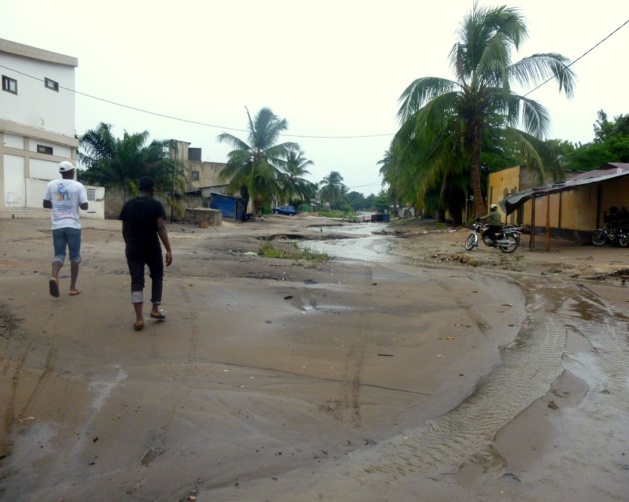
In Togo, it is very easy to become a taxi driver. Having a motorbike is enough. The driver then only needs to carry his passengers. If the taxi is unfortunately checked by the police, the driver can simply say that the passenger is a friend or a family member who will not be paying for the ride. The vehicles are very poorly maintained. Some “zems” lack in rear-view mirrors and others have underinflated tires.
A few “zems” are sometimes stopped by the police in order to be checked. In general, the problem is the helmet. Léo explains: “It is rare to see road users and drivers or motorbike taxis wearing a helmet”. And yet, protecting their head is compulsory for the driver as well as the passenger. When a policeman arrests a “zem”, the driver is always the one fined if one of the passengers is not wearing a helmet.
Kossi Emile indicates that “the driver runs the greatest risk since he sees his motorbike seized. This is why drivers try most of the time to provide equipment. But, as Léo clarifies, “this is made difficult by the lack of money to buy helmets, which are very expensive”. Therefore, the police try to patrol the roads to ensure the safety of users as much as possible.
However, significant corruption remains among police forces. According to Léo, “despite corruption, the police play their role and take money on the roads from taxi and motorbike drivers”. In Togo, “zems” and motorbikes are often the vehicles the most targeted by the police. In this country, unfortunately, corruption of police forces truly exists.
Indeed, even if drivers respect the rules, policemen sometimes make up new requirements that road users are forced to comply if they don’t want to pay any fines. Corruption is a problem that cannot be ignored because there are many more consequences than one could think about. These embezzlements have repercussions on the daily life of many citizens.















